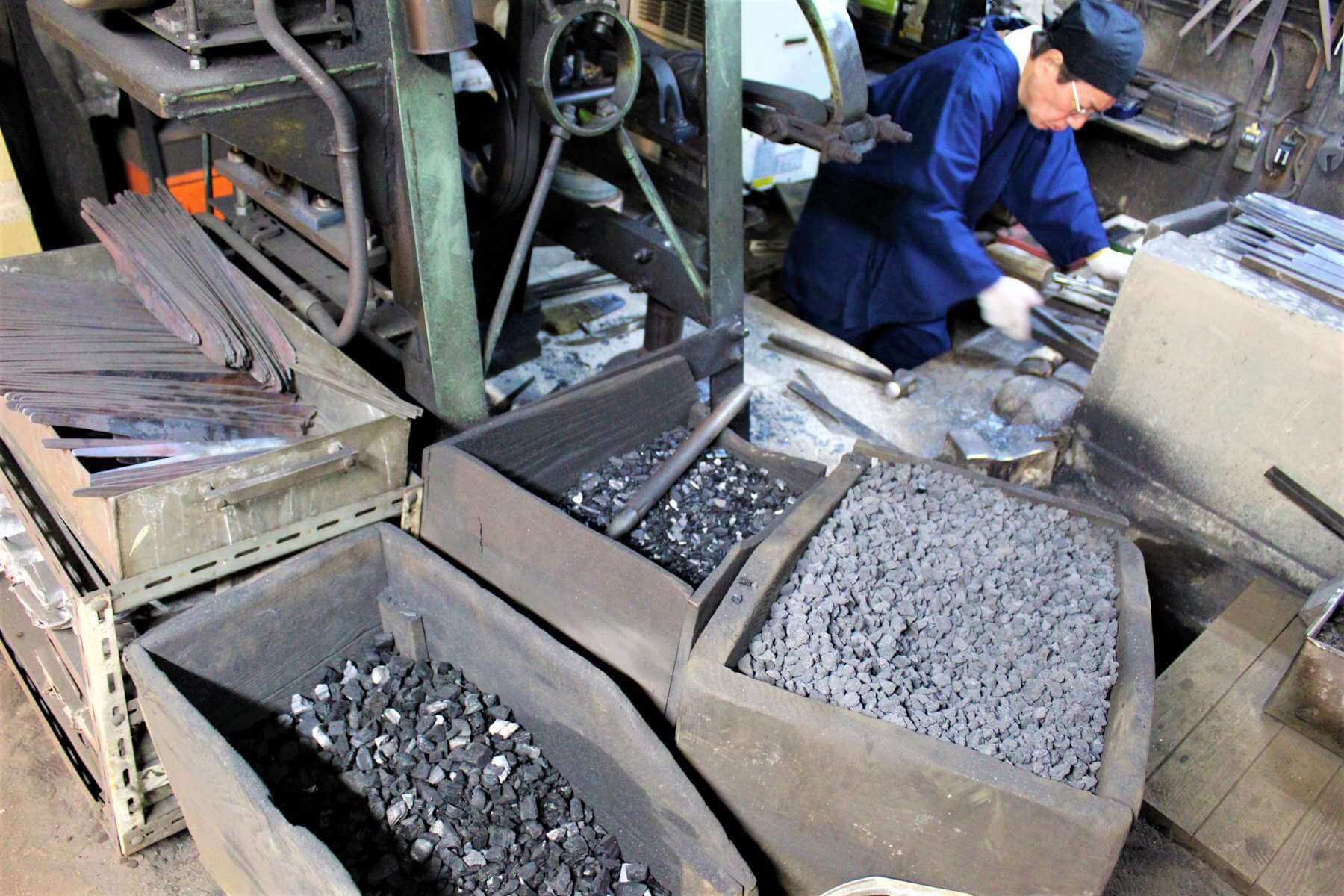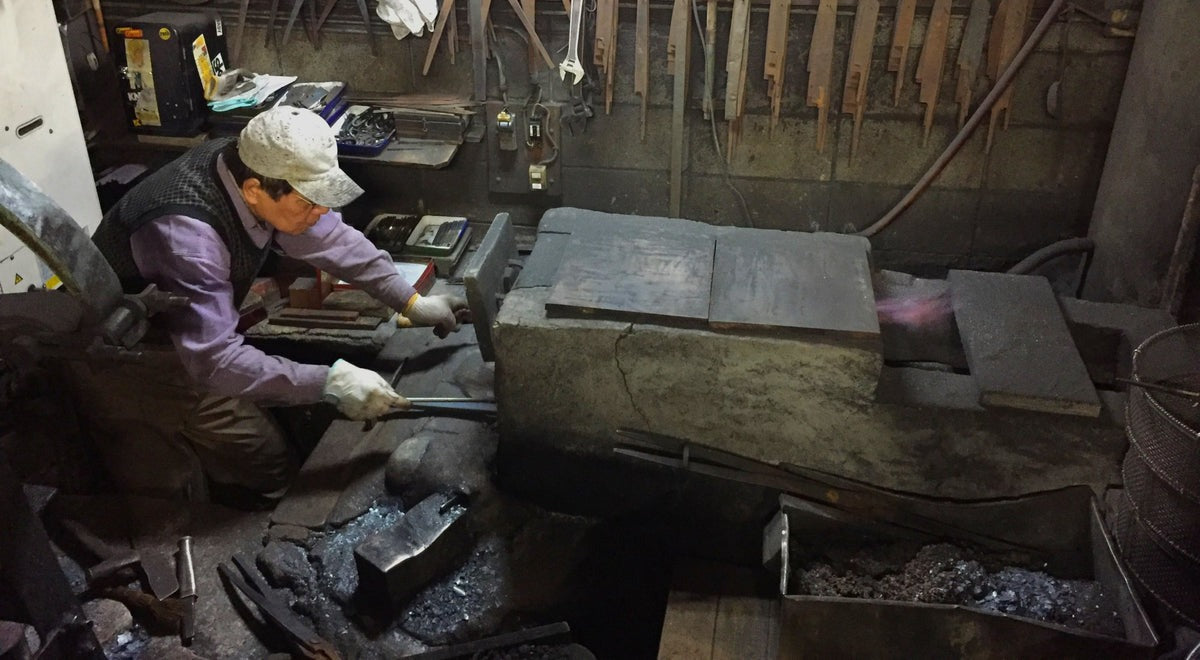
Single Bevel Knives vs Double Bevel Knives
Knowing the difference between a single bevel vs a double bevel knife is critical when choosing the right blade. Kitchen knife edge types are among the most significant differences between Western-style and traditional Japanese knives. You must select your tool based on the task at hand. Different cutting techniques and foods will require different beveled knives.
What is a Beveled Knife?
Simply put, a bevel is an angle. Western-style knives are flat and sharpened on both sides, creating a V shape or a double bevel. The benefit of a single bevel knife is the angle that leads toward its sharp edge, making its shape similar to a chisel レ.
Japanese kitchen knives are either single or double-beveled. Choosing between a single vs a double bevel is a matter of what you’re preparing. Both are fine tools that come from a long tradition of samurai sword-making. Each style of knife has a place in your kitchen. The kitchen knife edge type that you reach for will depend on the dish you’re cooking.
Single Bevel Knife
Because of the angle of a single bevel vs a double bevel, a single angle is desirable when creating a consistent cut with proteins like fish or vegetables like a daikon radish. When the food is malleable or thinner cuts are desired, a single bevel knife can yield very thin, consistent cuts while pushing food away from one side. As such, single bevel knives are either right-handed or left-handed.
This edge resembles Japanese woodworking chisels because the blade’s flat side is concave. Its shape is formed right after forging by hammering the newly formed blade on an anvil with a slight rounding. The shape is essential to the design during the sharpening of a single bevel blade.
Types of Single Bevel Knives

[Shop Single Bevel Knives Now]
- Yanagiba & Takohiki – These traditional Japanese slicers are commonly used in Osaka and Kyoto. The Yanagiba, Shobu, and Takohiki knives excel at creating clean, precise cuts. They handle sushi, fish fillets, and sashimi. Additionally, they work well for carving turkey, squid, roast beef, octopus, and other seafood.
- Usuba & Kamagata Usuba – These blades are a popular choice among chefs due to their efficiency in dicing, slicing, and mincing produce. They handle delicate tasks like peeling daikon with ease while also being strong enough to cut through larger vegetables, including cabbage. When choosing between a single bevel and a double bevel knife, this blade is a great option for preparing raw dishes.
- Deba – In a single bevel vs double bevel battle, Deba is the heavyweight. These heavy blades are the butcher knives of Japan. It’s ideal for actions such as chopping, slicing, and disjointing. Because of the blade’s design, it effectively cuts off the heads of fish or through their bones without damage.
Double Beveled Knife
When cutting or chopping through large vegetables, culinary experts often choose a double bevel vs a single bevel. This edge pushes the food away from both sides as you slice, whereas a single bevel blade may break the bigger vegetable apart.
Thanks to angling both sides, double-beveled knives are also ambidextrous. Their kitchen knife edge type makes them well-balanced, sharp, and durable. Their versatility is why their popularity is growing in Western kitchens.
Types of Double Bevel Knives

[Shop Double Bevel Knives Now]
- Sujihiki – These knives have a narrower surface, reducing friction while cutting through meat. Japanese chefs prefer the Sujihiki for its ability to glide smoothly through delicate fish in one precise motion. This method maintains both flavor and texture, which is important for raw preparations. Use this blade when slicing sushi, fish fillets, or sashimi.
- Gyuto – Gyuto knives are the Japanese version of the classic Western chef’s knife. Because of its many uses, they are favorably compared to French Sabatier knives. This type of knife is sleek and smooth slicing, suitable for cutting most meats, fish, vegetables, and fruits.
- Santoku – Santoku means “three uses,” the perfect name for a Japanese kitchen knife used with meat, vegetables, or fish. This multipurpose tool is ideal for precision mincing, dicing, and slicing. Vegans and vegetarians wield these blades to conjure more subtle textures and flavors from produce.
Stay Sharp
Chefs worldwide revere Japanese knives for their durability and excellent edge retention. Both kitchen knife edge types are handy in the kitchen, but consider sharpening when comparing single bevel vs. double bevel knives.
Sharpening a single bevel knife takes extra care. Begin on the beveled side and mimic the existing angel while pushing flat. After sharpening the side, there will be a slight burr. Flip the blade over and remove the burr on the flat side. The concave shape of this kitchen knife edge type ensures you only need to remove metal from the outside edge of the blade.
Double bevel knives are easier to sharpen. Use a whetstone and maintain a 10 to 15-degree angle on each side, creating a total angle between 20 and 30 degrees. Knives used for cutting dense meats or tough vegetables benefit from a slightly adjusted sharpening angle to enhance durability.
Single Bevel vs Double Bevel: Who Makes the Final Cut?
Deciding on a single bevel vs a double bevel knife requires foresight. Both kitchen knife edge types are excellent and efficient tools that carry on the centuries-old tradition of samurai sword making. Allow your goals to dictate your blade.
Single bevel blades are best for shaving or peeling, and double bevel knives are better for cutting and chopping. But as we’ve seen above, there are many applications for every type of Japanese kitchen knife. Because of their durability and craftsmanship, they’re the knife of choice of chefs and cooking enthusiasts globally.
Because of their quality craftsmanship and high-quality materials, the supply of authentic Japanese kitchen knives is often limited. After you settle on single bevel vs double bevel blades, shop our hand-finished selection and elevate your kitchen knife skills!
Next article: Stainless Steel Kitchen Knives vs High Carbon Kitchen Knives!
For more details or to check out our knives:


